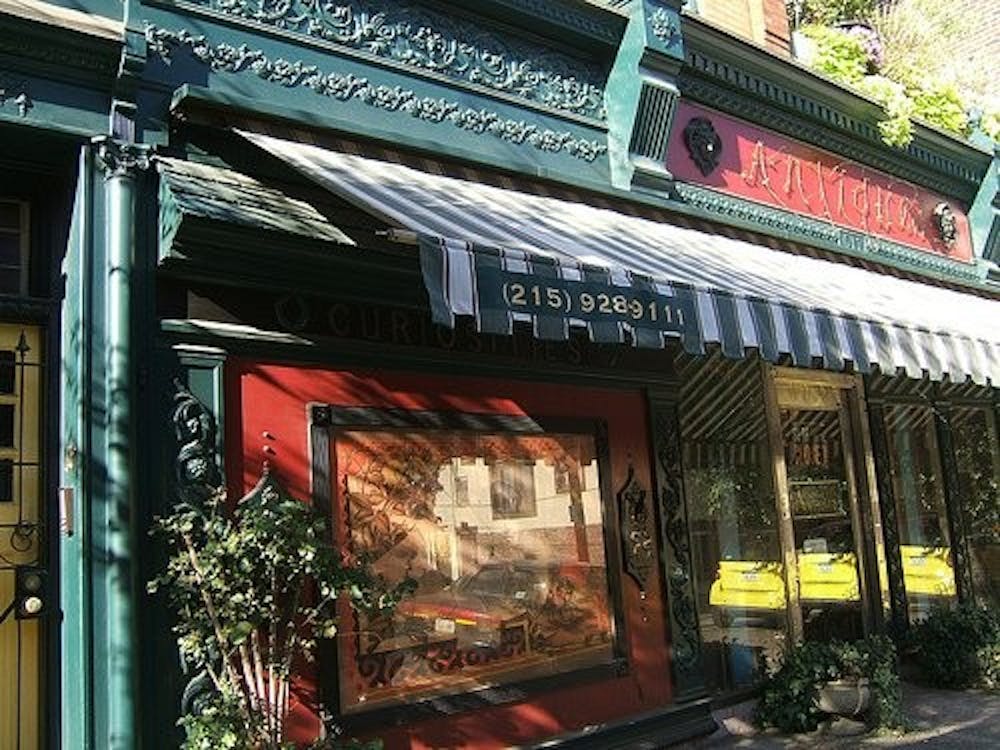Anastacia Fahnestock needed her wisdom teeth removed. It was 1985 and she had just graduated from University of the Arts. She and her partner Scott Evans were making a living through a hodgepodge of odd jobs: working at flower shops, driving carriages through the streets of Philadelphia, performing puppetry at the Wilma Theater. So, when pressed to scrounge up $500 for the medical procedure, they turned, with characteristic resourcefulness, to trash–picking. Their sidewalk sales at 16th and Spruce Streets became a booth in the basement of a synagogue–turned–flea market. Now, Anastacia’s Antiques occupies a 2,400 square foot shop at 619 Bainbridge Street.
The store makes an overwhelming impression. Dozens of fringed Victorian chandeliers hover above taxidermied woodland creatures. Medical charts and yellowing needlework samplers hang from the walls. One particularly striking display contains a number of fragile–looking ventriloquist puppets from the turn of the century. Another showcase glints with jewelry of all eras, from enamel brooches to mourning jewelry woven from human hair.
The overall effect: quirky decadence, a dazzling nest of artifacts, an inexhaustible treasure trove. Every inch contains a curiosity. Fahnestock attributes the shop’s stunning impression to her background in art. “Creating these little vignettes is like creating a world, something for people to wander through,” she says. “It’s an experience. It’s theater.”
She’s also drawn to the historical significance of antiques. “It’s like being an archaeologist, uncovering things that have been buried for so long and then bringing them to a second life,” she says. Take the store’s supply of old family photographs, for example. They come from every source imaginable: flea markets, old trunks discovered in basements, estranged family members who’ve lost sentimental connections to their photo albums. Because most of the pictures come in sets, they provide insights into the arcs of entire lives: one series shows a family in their horse and carriage, then in their new car. Photos overflow from the drawers of an old card catalog cabinet, an overabundance that Fahnestock attributes to her obsession with collecting.
“I gravitate towards one thing and then tend to hoard it,” she says. And because she tends to keep her favorite objects, rather than selling them, her tendency towards excess manifests itself in her and Evans’s home, too. Fahnestock laughs to herself at this conceit: “Scott likes to say that our house looks like this, only crowded.” Her collection of doorstops, for example, fills their home. “You can’t be in a store that’s really cluttered and then go home to somewhere stark,” she says. “Antiques are kind of a lifestyle.”
Even after 28 years, Fahnestock doesn’t see herself abandoning that lifestyle anytime soon. “Sure, there are bad weeks when people don’t respond to the store, and you think, wouldn’t it be nice…” she trails off before asserting herself once again. “But then you have a great weekend. We like what we do. As long as people keep responding to the experience, I don’t see it stopping.”

